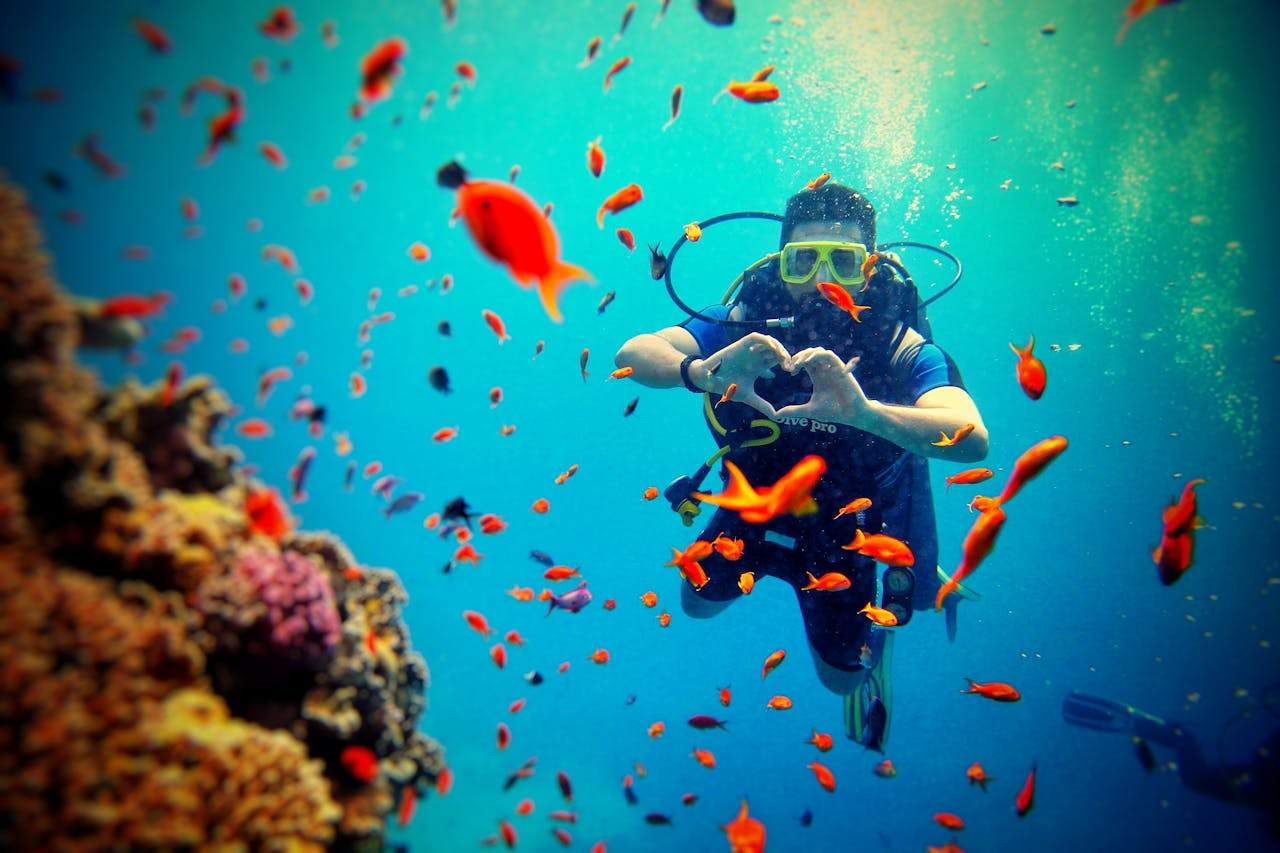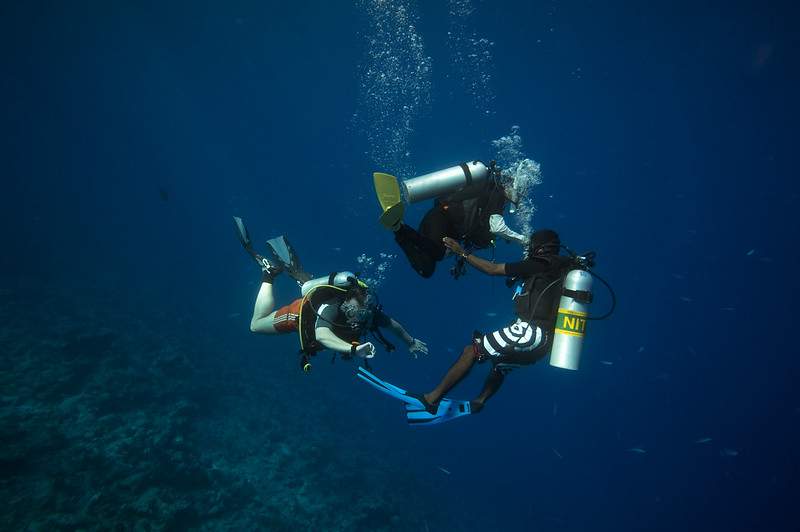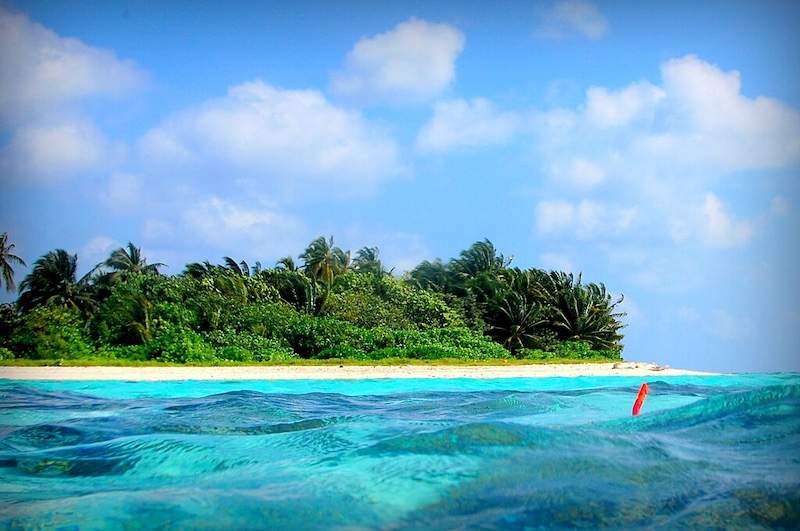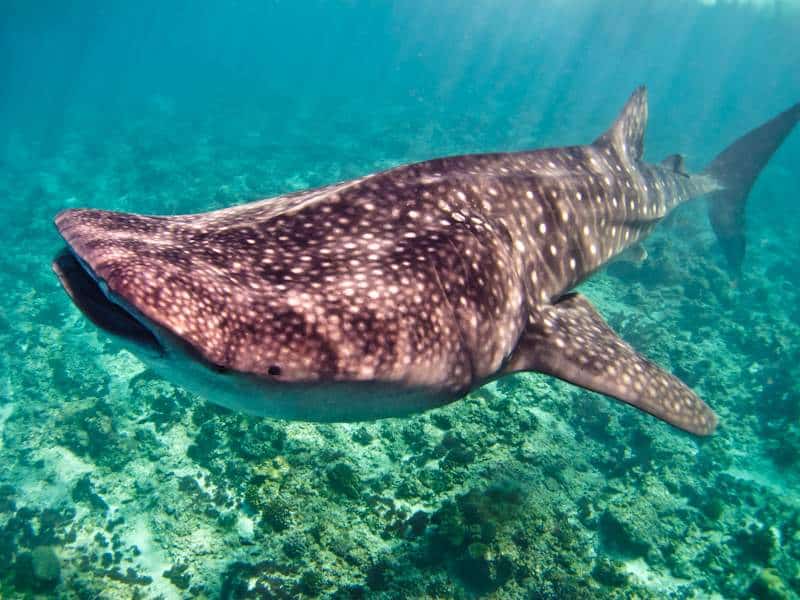Maldives Scuba Diving Guide: Seasons, Best Sites, Liveaboards & Wildlife
The Maldives isn’t just a diving destination—it’s the diving destination that ruins you for everywhere else. With over 1,000 coral islands scattered across 26 atolls, year-round warm water temperatures, and marine life encounters that range from gentle whale sharks to schooling hammerheads, this Indian Ocean paradise offers something for every underwater enthusiast. Whether you’re planning your first drift dive or chasing that perfect manta ray encounter, understanding the seasons, sites, and logistics will help you maximize every moment beneath these crystal-clear waters.
If you’re still mapping flights, transfers and stays, start with the ultimate Maldives travel guide to nail down the bigger picture first.
How Maldives Diving Works (Quick Primer)
Understanding Maldivian underwater geography is crucial because it directly affects your diving experience—and safety requirements. The country’s unique atoll structure creates distinct reef types, each offering different diving conditions and marine encounters.
- Atolls and Channels (Kandus): These underwater mountain ranges create natural channels where massive volumes of nutrient-rich water flow between the open ocean and inner lagoons during tidal changes. The result? Some of the most exhilarating drift dives on the planet, but also currents that require solid buoyancy control and drift diving skills.
- Thilas (Underwater Pinnacles): These are completely submerged seamounts that rise from the depths, typically with tops at 5-15 meters depth. When current hits these underwater mountains, marine life explodes—think grey reef sharks, schools of barracuda, and cleaning stations where mantas come to be pampered. These sites often offer the best big pelagic encounters but require intermediate to advanced certification levels.
- Giris and Farus: These represent the gentler side of Maldivian diving. Giris are shallow pinnacles that break the surface at low tide—perfect for beginners and turtle encounters. Farus are barrier reefs that create natural house reef systems around resort islands. Most resort house reefs are actually farus, making them ideal for easy shore diving and snorkeling.
The certification comfort level matters significantly here. While Open Water divers can enjoy many sites, the best encounters often happen in channels with moderate to strong currents. Advanced Open Water certification opens up the full spectrum of Maldivian diving. Timing impacts conditions—see best time to visit the Maldives for seasonal variations. For choosing your base and understanding transfer logistics, check where to stay in the Maldives.
Diving Seasons & Visibility (What to Expect)
The Maldives offers year-round diving, but the experience changes dramatically between seasons. Understanding these patterns helps match your expectations with reality—and your budget with conditions.
Dry Season (November to April)
This season delivers the postcard-perfect diving most people expect. Visibility regularly exceeds 30-40 meters, seas are calm, and underwater photography conditions are pristine. The northeast monsoon brings stable weather patterns and minimal rainfall, making this prime time for beginners, underwater photographers, and anyone wanting predictable conditions. However, expect peak season pricing and crowded dive sites.
Wet/Green Season (May to October)
This season transforms the diving experience entirely. Stronger currents bring plankton blooms that reduce visibility to 15-25 meters but create feeding opportunities that attract whale sharks, manta rays, and other pelagics in dramatic numbers. The southwest monsoon brings more challenging conditions but also the year’s most spectacular marine encounters. Plus, dive packages often cost 40-50% less than peak season rates.
Regional variations add another layer of complexity. During dry season, eastern sides of atolls typically offer better visibility due to current patterns, while wet season often provides clearer water on western exposures. Hanifaru Bay in Baa Atoll operates on its own schedule entirely, with manta feeding aggregations peaking during the southwest monsoon regardless of conditions elsewhere.
Value seekers should explore Maldives on a budget for wet season strategies. Wildlife timing deserves its own deep dive—check swimming with manta rays and whale sharks in the Maldives for specific encounter windows.
Best Dive Sites & Atolls (The Highlights)
Ari Atoll (North & South)
Why Go: The undisputed whale shark capital of the Maldives, with South Ari offering year-round encounters and North Ari providing excellent manta cleaning stations.
Ideal Level: Open Water to Advanced—sites range from gentle house reefs to challenging channel drifts. South Ari’s whale shark sites like Whale Shark Point require only basic certification, while sites like Fish Head demand strong current experience.
Ari Atoll strikes the perfect balance between accessibility and world-class encounters. The protected marine area status means healthy reefs and abundant life, while the infrastructure supports both resort-based and liveaboard operations. For choosing your base, see best islands in the Maldives. For boat-based exploration, consider liveaboard diving in the Maldives.
Baa Atoll (Hanifaru Bay Area)
Why Go: UNESCO Biosphere Reserve hosting the world’s largest seasonal manta ray aggregations, with up to 200 mantas gathering during peak feeding periods.
Ideal Level: All levels—snorkeling and diving opportunities, though permits are required and sites close during peak aggregation periods to protect the animals.
Hanifaru Bay operates under strict regulations with limited daily visitors and seasonal closures (typically June-November with peak July-October). The experience is genuinely life-changing, but planning around permits and weather windows requires flexibility.
North & South Malé Atolls
Why Go: The most accessible diving with excellent infrastructure, perfect house reefs, and classic sites like Victory Wreck and Banana Reef.
Ideal Level: All levels—from discover dives to advanced drift diving, with the most comprehensive training facilities in the country.
The proximity to Velana International Airport makes these atolls perfect for shorter trips or mixed-ability groups. Resort density means excellent dive center infrastructure but also more crowded sites during peak season. Base selection guidance in where to stay in the Maldives.
Vaavu Atoll
Why Go: Advanced drift diving at its finest, with channels like Fotteyo Kandu delivering adrenaline-pumping encounters with grey reef sharks, eagle rays, and schooling pelagics.
Ideal Level: Advanced Open Water minimum—strong currents and challenging conditions require solid drift diving experience.
Vaavu offers some of the Maldives’ most exciting diving but demands respect for current conditions and safety protocols. Essential current and safety guidance in Maldives travel tips.
Far South (Foammulah/Fuvahmulah, Addu)
Why Go: Expedition-style diving with potential tiger shark and hammerhead encounters, plus unique geography creating different marine ecosystems.
Ideal Level: Advanced plus—remote locations, challenging conditions, and limited infrastructure require significant diving experience.
The far south offers encounters unavailable elsewhere in the Maldives but requires serious commitment in terms of time, budget, and skill level. Cost considerations in how much does a Maldives trip cost and boat options in liveaboard diving in the Maldives.
Liveaboard vs Resort-Based Diving (Which is Right for You?)
The choice between liveaboard and resort-based diving fundamentally shapes your Maldives experience—and your wallet.
Liveaboards
Liveaboards maximize dive variety and pelagic encounters. With 3-4 dives daily across multiple atolls, you’ll access remote channels and cleaning stations that day boats can’t reach. A week typically includes 20+ dives at sites like Fish Head, Fotteyo Kandu, and seasonal manta aggregations. Costs run $200-400 per day all-inclusive—often cheaper per dive than resort packages when you factor in meals and accommodation.
The trade-off? Compact cabins, fixed schedules, and limited non-diving activities. Liveaboards work best for serious divers who prioritize underwater encounters over creature comforts.
Resort/Day-Boat Diving
Resort/Day-Boat Diving offers comfort, flexibility, and non-diver options. You’ll typically do 2-3 boat dives daily plus unlimited house reef access. Luxury resorts provide world-class spas, dining, and activities for surface intervals or non-diving companions. However, you’re geographically limited to nearby sites, and costs can escalate quickly—especially at luxury properties where single dives cost $65-120 plus equipment rental.
Decision Matrix:
- Wildlife Priority: Liveaboard wins for variety and remote encounters
- Comfort Priority: Resort wins for space, amenities, and flexibility
- Family Travel: Resort wins for kids’ clubs and non-diving activities
- Budget Consciousness: Liveaboard typically offers better value per dive
Deep dive on boat options in liveaboard diving in the Maldives. Family considerations in family-friendly resorts in the Maldives. Honeymoon angles in best Maldives honeymoon resorts.
Wildlife Calendar (Manta Rays, Whale Sharks, Sharks)
Marine life timing in the Maldives revolves around monsoon patterns and the plankton blooms they create. Understanding these cycles helps maximize your chances of those bucket-list encounters.
- Manta Rays: These follow plankton concentrations driven by monsoon patterns. Hanifaru Bay’s legendary aggregations peak during southwest monsoon months (July-October), when up to 200 mantas gather for feeding frenzies. Other cleaning stations throughout the country offer encounters year-round, but numbers and reliability increase dramatically during plankton-rich wet season months.
- Whale Sharks: These show more consistent patterns, with South Ari Atoll offering year-round encounters. However, sighting rates increase significantly during wet season months when plankton blooms attract these gentle giants to feeding areas. August through November typically provides the most reliable encounters.
- Grey Reef Sharks, Hammerheads, and Other Pelagics: These concentrate around channels and thilas when currents bring baitfish. Strong current periods during wet season often produce the most spectacular shark encounters, though they require advanced diving skills to enjoy safely.
The key insight? The best wildlife encounters often coincide with more challenging diving conditions. It’s a trade-off between pristine visibility and incredible marine life concentrations. Dedicated coverage in swimming with manta rays and whale sharks in the Maldives.
Costs & Budgeting for Divers
Diving in the Maldives spans an enormous cost range depending on your accommodation and diving style choices.
- Liveaboard Costs: Budget boats start around $200-250 per day including 20+ dives, meals, and accommodation. Mid-range vessels run $300-400 daily, while luxury liveaboards can exceed $500 per day. Most include nitrox, basic equipment rental, and all meals.
- Resort Diving Costs: Single dives range from $65-120 depending on property level, with equipment rental adding $15-25 per dive. Dive packages often provide better value—10-dive packages typically cost $600-900. Luxury resorts can charge $10,000+ for private dive boat charters.
- Additional Costs: Nitrox certification adds $200-300 but pays for itself quickly with better bottom times and shorter surface intervals. Seaplane transfers to distant atolls add $300-500 per person each way but provide access to less crowded sites.
- Budget Strategies: Local island guesthouses offer diving from $1,200-2,000 per week including accommodation, meals, and 10-15 dives. Wet season rates drop 40-50% across all categories.
Overall budgeting in how much does a Maldives trip cost. Money-saving tactics in Maldives on a budget. Transfer choices in what to expect from Maldives seaplane transfers.
Certification Levels & Training in the Maldives
The Maldives welcomes divers of all levels but rewards those with advanced skills. Understanding certification requirements helps set realistic expectations and maximize your underwater time.
- Beginner-Friendly Sites exist throughout the country. House reefs, protected lagoons, and shallow giris provide excellent conditions for Open Water divers and even Discover Scuba participants. Many resorts offer full PADI programs from Discover Scuba ($125) through Advanced Open Water ($650).
- However, the best diving requires current experience. Channel dives, thilas with strong flow, and pelagic encounters often demand Advanced Open Water certification and solid drift diving skills. The Maldivian regulations limit entry-level divers to 20 meters depth and require no-decompression profiles for all recreational diving.
- Nitrox certification provides significant value in the Maldives. With average depths of 15-25 meters on most dives, the extended bottom times and shorter surface intervals make a real difference to your dive count and experience quality.
- Training Opportunities abound, particularly around Malé Atolls where dive center density supports comprehensive course offerings. Advanced specialties like drift diving, deep diving, and underwater photography all have obvious applications here.
For non-divers and snorkeling companions, explore snorkeling in the Maldives.
House Reefs vs Boat Diving
The quality of a resort’s house reef can make or break a diving holiday, but many travelers underestimate this crucial factor when choosing accommodations.
Great House Reefs
Great House Reefs offer unlimited diving access, perfect conditions for beginners and night diving, and often rival boat dive sites for marine life encounters. Properties like Mirihi Island Resort, Filitheyo, and Coco Bodu Hithi have built reputations specifically around their house reef quality. You can dive multiple times daily without boat transfers, time constraints, or additional costs.
Mediocre House Reefs
Mediocre House Reefs force you to rely entirely on boat diving, which limits your total dive count and increases costs significantly. Some resorts market “house reef access” when the reality is a barren lagoon with minimal marine life.
Evaluating House Reefs
Evaluating House Reefs requires research beyond resort marketing. Look for:
- Multiple access points and varied depths
- Strong coral health and fish populations
- Current flow that brings nutrients and pelagics
- Night diving possibilities and easy entry/exit
Boat Diving provides access to distant thilas, channels, and specialty sites that no house reef can match. However, it typically limits you to 2-3 dives daily with fixed schedules and weather dependencies.
The sweet spot? Properties with excellent house reefs AND quality boat diving operations. Accommodation guidance in where to stay in the Maldives. Snorkeling crossover considerations in snorkeling in the Maldives.
Packing List for Divers (Practical & Light)
Effective dive packing for the Maldives balances essential safety equipment with luggage constraints and rental options.
Essential Personal Items:
- Dive Computer: Mandatory for all diving and invaluable for multi-level profiles
- SMB and Reel: Critical for drift diving safety—currents can sweep divers away from boats quickly
- Mask: Personal fit prevents leaks and fogging issues
- Reef-Safe Sunscreen: Chemical sunscreens are prohibited at many sites
- 3mm Wetsuit or Rash Guard: Water temperatures of 26-29°C feel warm initially but can chill you on repetitive dives
Smart Rental Choices:
- BCD and Regulators: Quality rental equipment is widely available and saves significant luggage space
- Fins: Rental fins work fine, though bringing your strongest fins helps in current situations
- Tanks and Weights: Always included in diving packages
Safety and Convenience Items:
- Backup Dive Light: Essential for night dives and exploring overhangs
- Dry Bag: Protects electronics and keeps spare clothes dry
- Dive Logbook: Physical or digital for certification verification
- Basic First Aid: Waterproof bandages and antiseptic for minor coral cuts
Comprehensive packing guidance in what to pack for a Maldives trip.
Safety, Sustainability & Etiquette
Maldivian diving operates under strict safety regulations that every diver must understand and follow.
- Current Safety is paramount—always carry and deploy SMBs during ascents, maintain buddy contact, and follow dive guide instructions regarding current conditions. Maximum depth is limited to 30 meters for recreational diving, with mandatory 3-minute safety stops at 5 meters.
- Group Size Limits restrict boats to maximum 6 divers per guide, ensuring proper supervision and safety standards. Solo diving is prohibited under all circumstances.
- Protected Areas require permits and have seasonal closures—particularly Hanifaru Bay during peak manta aggregations. Respect these restrictions as they protect the marine life we come to see.
- Reef Etiquette means maintaining neutral buoyancy, avoiding coral contact, and never feeding marine life. The reef systems here are fragile and crucial to the country’s tourism economy.
- Emergency Preparedness includes oxygen on all dive boats, first aid equipment, and communication systems. Two hyperbaric chambers operate in the region—at Kuredu Island Resort and Bandos Island Resort.
Sample 7-Day Dive Itineraries
Itinerary A (Resort-Based): North Malé + Ari Highlights
- Days 1-3: North Malé Atoll based at resort with excellent house reef
- House reef diving for warm-up and night dives
- Boat trips to Victory Wreck, Banana Reef, and Manta Point
- Training dives if needed for current preparation
- Days 4-7: Transfer to South Ari Atoll
- Whale shark encounters at dedicated sites
- Manta cleaning station dives
- Advanced channel dives for certified divers
- Total Dives: 18-22 including house reef access
Itinerary B (Liveaboard): Central Atolls Circuit
- Route: Malé → Ari → Baa → Raa → Malé
- Days 1-2: Ari Atoll whale sharks and thilas
- Days 3-4: Baa Atoll manta encounters (seasonal)
- Days 5-6: Raa Atoll pinnacles and channels
- Day 7: Return via Malé Atoll classics
- Total Dives: 20-24 including night dives
Itinerary C (Advanced South): Vaavu + Deep South Sprint
- Prerequisites: Advanced Open Water, 50+ logged dives, strong current experience
- Days 1-3: Vaavu Atoll channel diving
- Days 4-7: Fuvahmulah expedition for tiger sharks and hammerheads
- Total Dives: 16-20 challenging advanced sites
- Note: Weather dependent; requires flexibility
Links to liveaboard diving in the Maldives and best islands in the Maldives for detailed planning.
FAQs
Is the Maldives good for beginner divers?
Absolutely. Calm house reefs, warm water, and excellent visibility during dry season create ideal learning conditions. Many resorts offer full PADI programs from Discover Scuba through Advanced Open Water. However, the best encounters require current diving skills—consider advancing your certification here.
What is the best month for diving in the Maldives?
It depends on priorities. February-March offers the best visibility and conditions for beginners. August-October provides the most spectacular marine life encounters but requires advanced skills. November offers good conditions with improving wildlife activity.
Where can I see whale sharks in the Maldives?
South Ari Atoll offers year-round whale shark encounters, with August-November providing the most reliable sightings. Sites like Whale Shark Point and Dhigurah area consistently produce encounters for patient divers.
Do I need nitrox in the Maldives?
While not essential, nitrox certification provides significant value. Most dives occur at 15-25 meters depth, where nitrox extends bottom times and reduces surface intervals. Many operators include nitrox at no extra charge.
Is July ok for diving in the Maldives?
July offers excellent diving for advanced divers comfortable with currents and variable conditions. Marine life encounters peak during this month, with spectacular manta and whale shark activity. However, beginners might prefer calmer dry season months.
Summary: Match Your Goals to the Right Season & Atoll
Successful Maldives dive planning comes down to honest assessment of your skills, priorities, and budget. Beginners and photographers should target dry season months (November-April) for predictable conditions and pristine visibility. Advanced divers seeking wildlife encounters should embrace wet season months (May-October) despite more challenging conditions. Budget-conscious travelers will find their sweet spot during shoulder periods—particularly May and October—when conditions improve but rates remain reasonable.
The atoll choice matters just as much as timing. Ari Atoll delivers reliable whale shark encounters for all levels. Baa Atoll requires seasonal planning but offers unmatched manta experiences. Malé Atolls provide the most infrastructure and training opportunities. Remote atolls reward advanced divers with exclusivity and unique encounters.
Remember, there’s no single “best” time or place—only the combination that matches your certification level, comfort with challenging conditions, and underwater priorities. The Maldives delivers world-class diving year-round; success lies in choosing the right season and sites for your specific goals.
For flights, transfers, stays and non-diving days, use the ultimate Maldives travel guide.




